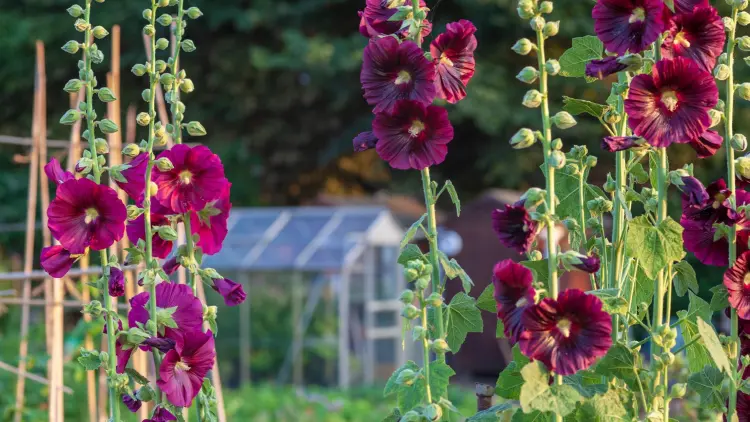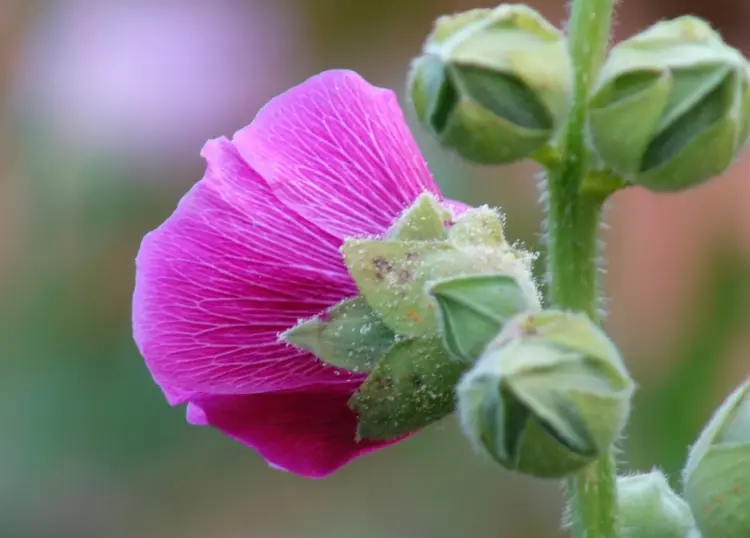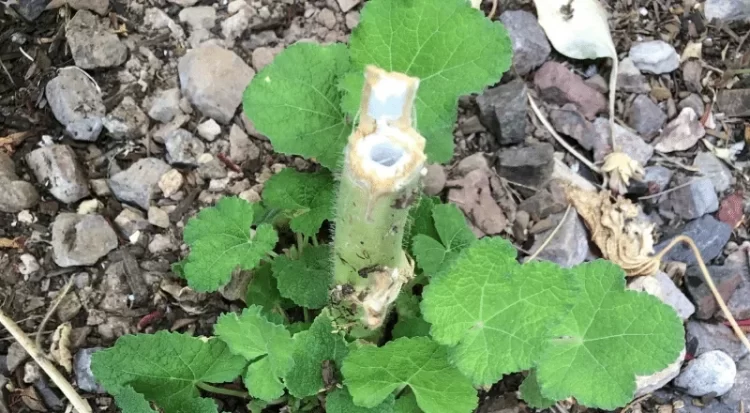Hollyhocks are among the most beautiful species in the flower garden. Although they are relatively easy to maintain, you still need to know how to take good care of them in order to enjoy their spectacular blooms throughout the season. But should you cut back hollyhocks and why? When and how to do it? How to prune these plants in the fall?
Should You Cut Back Hollyhocks?
When I think of summer, I always think of my grandmother’s garden filled with the flowers of her hollyhocks. She adores these plants, which she calls “medicinal”, from which she collects the flowers and prepares tea from their petals. However, not long ago, while visiting her, I caught her cutting her plants. As I had never seen her do it before, I immediately asked the question: “But do you have to cut back hollyhocks?”. I have hollyhocks in my garden too, and I was very interested to know why, when and how to do it!
Hollyhocks are perennials that are often grown as biennials. However, once you’ve had them in your garden, they’re likely to come back again and again. They can even easily become invasive because they self-seed. But do we really need to cut back these flowers? Not really! Nevertheless, when you want to prolong their flowering even at the end of summer, cutting back hollyhocks is highly recommended. What’s more, according to my grandmother, removing wilted flowers can help prevent them from self-seeding and becoming invasive.
Also read: Why You Should Not Cut Back Perennials: What Are the Benefits?
When to Cut Back Hollyhocks?
Should you cut back hollyhocks? Yes, but when exactly? There is actually no ideal time to prune these plants. There’s really no ideal time to prune these plants. They bloom from June to September, and once the flowers have faded, you can cut them back at the base to encourage further flowering.
Hollyhocks die in the fall and pruning their stem a few inches above the ground will clean up your garden and prepare it for new blooms in the spring. But be careful! If you want hollyhocks to self-seed, leave the faded flowers until they turn brown and drop their seeds to reproduce. You can also collect the seeds yourself and plant them in the soil.
Also read: Should You Cut off Faded Hydrangeas?
How to Cut These Plants after Flowering to Encourage Them Blooming?
Cutting hollyhocks is slightly different than cutting plants that only produce one flower per stem, since the buds don’t all open at the same time. To clean up the plant and keep your garden looking “clean”, you can simply remove wilted flowers from the stems.
However, to encourage flowering, my grandmother advised me to cut off the entire flower яшеп at the base when the majority of the flowers have already faded. How to do it step by step?
- Make a habit of carefully observing the flowers of the plant. When they start to lose color and fall off, it’s time to act. Remove them so the plant can save its energy for new flowers.
- If you want the plant to self-seed, leave a few faded flowers on it or collect the seeds to plant them yourself.
- In the fall, prune the plant well using pruning shears and leaving only a few inches above the ground.
- Also cut off damaged and dead shoots.
How to Cut Back Hollyhocks for the Winter?
Trimming hollyhocks for the winter is different from just removing the faded flowers for better blooming. If you want the plants to drop its seeds for next year, you need to leave the faded flowers on the stems so they can release them. Once the seeds have fallen, cut the plants back to the base, regardless of whether the leaves are still alive or dead.
You don’t have to cut the flowers off the hollyhock to get a more beautiful plant. It will grow beautiful and healthy even if you don’t. However, it could encourage the plant to flower by preventing it from wasting energy on seed production. In addition, your garden will look much cleaner and more beautiful. So, are you going to try too?
Also read: Things Hydrangeas Hate the Most: A Practical Guide to Abundant Blooms




